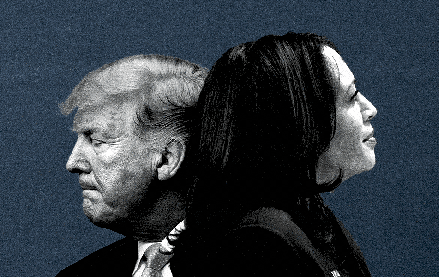The 2020 election ignites a new debate: Does political advertising belong on platforms?
The ongoing debate about political advertising on platforms has reached its natural conclusion — with a meta-question of whether or not political advertising has a place on those platforms.
Last Wednesday, Twitter CEO Jack Dorsey announced that the company would no longer accept political advertising on the platform. Dorsey’s decision follows weeks of discourse, spurred by Facebook and Elizabeth Warren, about whether or not political advertising belongs on platforms during the 2020 election. Now, that political advertising hubbub has advertisers concerned about brand safety on the platforms as advertisers don’t want their content to appear next to incendiary political advertising. At the same time, marketers and agency execs are unsure how the various rules across platforms apply to clients’ marketing especially since clients now talk about politically-adjacent issues in ads. If issue-based advertising is out on platforms that could be dicey for clients. For example, could Patagonia still talk about climate change in advertising?
“Political advertising in digital is an inherently problematic area,” said Joshua Lowcock, evp, chief digital and innovation officer at UM, adding because “digital is not regulated,” and there are “inconsistent decisions across multiple platforms” it can be a tough environment to navigate. “There is marketer concern. On behalf of clients, we’ve made representations directly to the key platforms about their perspectives. There are conversations going on, they’re going on behind closed doors.”
The exact worry of marketers may vary but, in general, the lack of consistency across platforms, lack of transparency into policy decisions and potential to have advertising appear next to virulent political content are among their chief concerns. That doesn’t mean marketers are pulling their budgets from platforms yet, but that conversations are happening among agencies, clients and platforms to address concerns about political advertising.
“So many of our clients do not want to appear next to political advertising,” said Barry Lowenthal, president of The Media Kitchen. That said, Lowenthal’s clients and other agency sources say that they haven’t been asked to pull spending on Facebook or other platforms with political advertising yet.
“When you talk to agencies and clients, it goes back to brand safety concerns for a lot of advertisers and agencies,” said Alison Pepper, svp of government relations for the 4A’s. “[Brands] don’t want their ads next to politically toxic advertising.”
The existence of political advertising on platforms exacerbates brand safety issues that the platforms have been overrun with in recent years. Now, advertisers are uneasy with the idea that their content could be next to incendiary political ads. Companies may then make decisions on where to advertise based on where political ads won’t be.
Currently, Facebook, Instagram, Google, YouTube and Snapchat accept political advertising. Now that Twitter will no longer allow political advertising, the platform joins LinkedIn, TikTok and Pinterest in rejecting those ad dollars. Social media is just one aspect of digital political advertising. Overall, digital spending among 2020 presidential hopefuls is now at $84.6 million, according to the Wesleyan Media Project. Kantar has predicted that $6 billion will be spent on political advertising for the 2020 election with 20% of that going to digital. It’s unclear how much of that is earmarked for platforms but it is likely a smaller piece of the pie. Revenue for platforms from political advertising is small — in 2018, Twitter made less than $3 million from political ads, and Facebook said that political ad revenue amounts to roughly 0.5% each year.
While marketers are concerned about political advertising on platforms, getting politics out of advertising will prove difficult especially when it comes to issue-based advertising. As more marketers have pushed for brand purpose in marketing, some of those have added political issues or cause-based marketing into the mix. If issue-based political advertising is out, are brands then unable to talk about those issues in their marketing? For example, last May direct-to-consumer female-founded brands like Thinx and Fur, among others, have used advertising to support abortion rights but it’s unclear if they could do so on platforms if issue-based political advertising is no longer available.
As Dorsey wrote in his tweets announcing the decision to stop allowing political advertising on Twitter, issue-based advertising ads another layer of complexity. “It’s a can of worms as to where to draw the line,” said Lowcock, adding that politically adjacent topics like energy or education could make it all the more difficult. “It’s a complicated category and there isn’t an agency out there without clients in energy, utilities, education, etc., and it potentially creates more confusion.”
According to Matthew Rednor, founder and CEO of Decoded Advertising, removing issues altogether becomes “problematic.” “Where do you draw the line? Oil companies can spend billions on advertising but people that support climate change can’t balance that message?” he asked.
Another issue with political advertising on platforms is that politicians are able to target their messages to niche interest groups. While targeting ads to groups is standard, and advertisers have used geographic groups for targeting messages via television, the targeting capabilities across platforms have become much more advanced in recent years. Those targeting capabilities have pushed marketers to spend more on digital platforms, as the ability to get a message in front of the right person at the right time helps potentially convert a sale is the end goal.
“If you’re launching a new soap brand you’re going to serve ads to your target audience,” said Laura O’Shaughnessy, CEO of SocialCode, adding that candidates should also be able to target their audiences. “The targeting capabilities are one thing, and there’s nothing wrong with them inherently. It’s how all marketing works.”
While the ability to target specific interests and small groups on platforms has helped marketers, the ability to use those capabilities on the platforms for political advertising bring up more questions like how large the groups who see political ads should be and if there will be discriminatory practices used in who sees those ads, according to agency sources.
“It inflames the problem and increases the likelihood that lies will be accelerated,” said Lowenthal. “It used to be that I might target people who care about an issue but now targeting is being used to reach people who are more likely to believe a lie and that, to me, is a real problem.”
Pepper says questionable propaganda isn’t “new,” but “the degree to which it can spread is a relatively new phenomenon.” “We’re at this inflection point in this industry with platforms and micro-targeting,” she said. “We have to decide as a society where we want to be. “
More in Marketing

Hyve Group buys the Possible conference, and will add a meeting element to it in the future
Hyve Group, which owns such events as ShopTalk and FinTech Meetup, has agreed to purchase Beyond Ordinary Events, the organizing body behind Possible.

Agencies and marketers point to TikTok in the running to win ‘first real social Olympics’
The video platform is a crucial part of paid social plans this summer, say advertisers and agency execs.

Where Kamala Harris and Donald Trump stand on big tech issues
The next U.S. president is going to have a tough job of reining in social media companies’ dominance and power enough to satisfy lawmakers and users, while still encouraging free speech, privacy and innovation.








